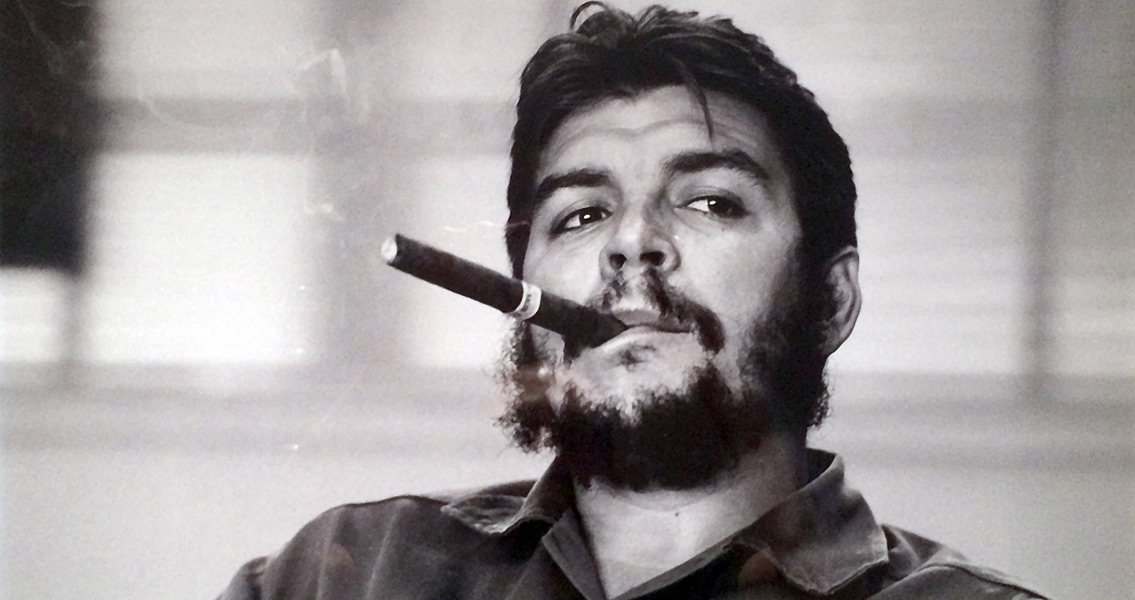<![CDATA[Immortalised as much as a t-shirt and poster design as he is as a hugely important Latin American political figure, Argentine revolutionary Che Guevara was captured in Bolivia on 8th October 1967. The event quickly became highly controversial. Initial reports declared that Che had been killed in combat on the 7th October. As the BBC reported in 1967, "A statement issued by the commander of the Eighth Bolivian Army Division, Colonel Joaquin Zenteno Anaya, said the 39-year-old guerrilla leader was shot dead near the jungle village of Higueras, in the south-east of the country." However, it soon became apparent that Che had in fact been captured by the Bolivian army before being executed the following day. His hands were cut off for the finger prints, to prove that he'd been killed in the event anyone claimed that his death had been fabricated. His body was then buried in an unmarked grave. Born Ernesto Rafael Guevara de la Serna to a wealthy Argentinian family in 1928, Che studied medicine at the University of Buenos Aires. During his younger years, he also traveled extensively around South and Central America and experienced first hand the plight of the lower classes on the continent - a period of his life immortalised in the Motorcycle Diaries. He became increasingly involved with the left-wing revolutionaries in Latin America, playing a key role in Castro's 1959 seizure of power in Cuba and being installed as the country's Minister of Industry. Throughout his life he remained a staunch opponent of US intervention in Latin America, and an advocate for peasant led revolutions in the continent to win social change. In 1965 he left his post in the Cuban government, and embarked upon a period of travelling, the exact details of which are unclear but seem to have included stays in Europe and Africa. He then resurfaced in Bolivia, joining a band of Guerrillas who were fighting against what they viewed as the broken promises of the country's President Paz Estenssoro. A declassified debriefing of Felix Rodriguez, from 1975, revealed the details of Che's fate following his capture by the Bolivian military. Rodriguez, a CIA operative, was in Bolivia posing as a Bolivian military officer in 1967. He had been deployed there, along with other CIA operatives, to assist in the capture of Che. Following a lengthy interrogation of a captured guerrilla, Rodriguez ordered the Bolivian military to focus its efforts on the Villegrande region, where he believed Che and his rebels were operating. Following Che's capture, it was Rodriguez who passed on the order from the Bolivian presidency to kill Guevara. Instructions to the soldier who was to execute Che were clear, the shots which killed him had to be consistent with the story told by the Bolivian government that he had been killed in combat. Rodriguez told the BBC in 2007 that his superiors in the CIA had wanted Che kept alive at all costs, but he ultimately had no choice but to comply with the wishes of the Bolivian government. "I could have tried to falsify the command to the troops, and got Che to Panama as the US government said they had wanted,". Che Guevara is remembered in movies, t-shirts and posters. Undoubtedly, these images of the man are completely detached from the complex individual they represent, someone considered a hero by some, and a monster by others. The details of his capture and his eventual death however, provide an insight into the tumultuous, cloak and dagger world of violence and complicated political movement in which he lived.]]>
The Controversial Capture and Death of Che Guevara
